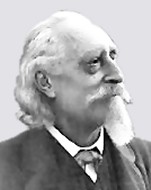|
緒論
-
什麼是性行為? |
|
性及性行為的術語演變史
5:從“性愛”到“性關系”的轉化 |
 |
|
保羅·曼特嘉紮
(Paolo
Mantegazza,1831-1910)
義大利內科醫師與人類學家,發表過一部有名的科學著作《性愛三部曲》:《性愛生理學》(1872)、《性愛除古代的性衛生學》(1877)和《人類的性愛》(1885)。後一部著作的英譯本用“性關係”替代了“性愛”一詞。
Paolo Mantegazza
(1831-1910), an Italian physician and anthropologist, published a famous scientific "Trilogy of Love", i.e. the three volumes "Fisiologia dell' amore" (Physiology of Love, 1872), "Igiene dell' amore" (Hygiene of Love, 1877), and "Gli amori degli uomini" (The Loves of Mankind, 1885). The English translation of this latter book replaced the word “amori” (loves) with “sexual relations".
|
|
|
19世紀伊始,新名詞“性(sexuality)”見諸科學研討之中。這個詞語仍就是指稱作為男性或女性的特性。但是,在數十年裏,它也就用於表示性的專門事務,而且最後它終於擁有含性能力或性知覺能力(the
capability of erotic feelings)的意思。現在,“性”這個詞語遠遠超越了男性或女性的含義,它並不必定是指男女性交或生殖這一層含義。甚至對獨自的手淫,人們現在也能夠認識到是“性”行為了,也就是說它被看作某人的“性”表達。
我們可以提供一個這種概念上轉變的典型例子,即那個時期的一本重要的義大利著作的英譯本:《曼特嘉紮外國性習俗研究》(Mantegazza's
study of Foreign Sexual Customs,“Gli
amori degli uomini”)被譯成英譯本《人類的性關係》(The
Sexual Relations of Mankind)。義大利語性愛(amori,即英語love)被“性關係(sexual
relation)”所替代,這一事實標誌著現代的性研究超越了傳統上對於這個課題的性研究。換一句話說,人們贊同廢除古代的性愛藝術(ars
amatoria),而代之以新的表達術語,即性的科學(scientia
sexualis)。“性愛(love)”作為科學研究的一個課題而言,它神秘莫測、如此地琢磨不定、似乎也含混不清、充滿著詩情畫意,而且還帶有感情色彩。此處出現的“性(sex)”這個詞語,恰如其分,顯得更加地專業化和中立化,更容易讓人分辨,這種轉變可以讓人以更冷靜和自控的方式對這個課題做出驗證。“性愛(love)”本身偏於哲學化,而“性關係”卻能夠予以分類和量化。
|
|
|
|
|
保羅·曼特嘉紮的《人類的性關係》美國譯本
American edition of Mantegazza's "Gli amori degli uomini".
|
|
|
|
|
|
|
Introduction - What is sexual behavior? |
|
History of the Term 6 |
|
At the beginning of the 19th century the new noun "sexuality" appeared in the scientific discussion. Again, at first this word referred only to the quality of being male or female. Within a few decades, however, it was also used to denote a preoccupation with sexual matters, and finally it came to mean the possession of sexual powers or the capability of erotic feelings. “Sexuality” now meant more than maleness or femaleness, and it was not necessarily always related to male-female encounters or to reproduction. Even solitary masturbation could now be perceived as "sexual" behavior, i.e., as an expression of someone's "sexuality".
A good illustration of this conceptual shift is provided by the English translation of an important Italian book of that period:
Mantegazza’s study of foreign sexual customs (“Gli amori degli uomini”) was translated into English as “The Sexual Relations of Mankind”. The fact that “amori” (loves) was replaced by “sexual relations” marks the triumph of modern sex research over the traditional approaches to the subject. In other words, the ancient
ars amatoria (art of love) was cast aside in favor of a new
scientia sexualis (science of sex). "Love" mysterious and ever elusive, seemed too vague, poetic, and emotional a subject to be approached by science. In its place now appeared "sex" a more technical and neutral, less confusing subject that could be examined in a more sober and controlled fashion.
"Love" had lent itself to philosophizing, "sexual relations" could be classified and counted.
|
|
|
|